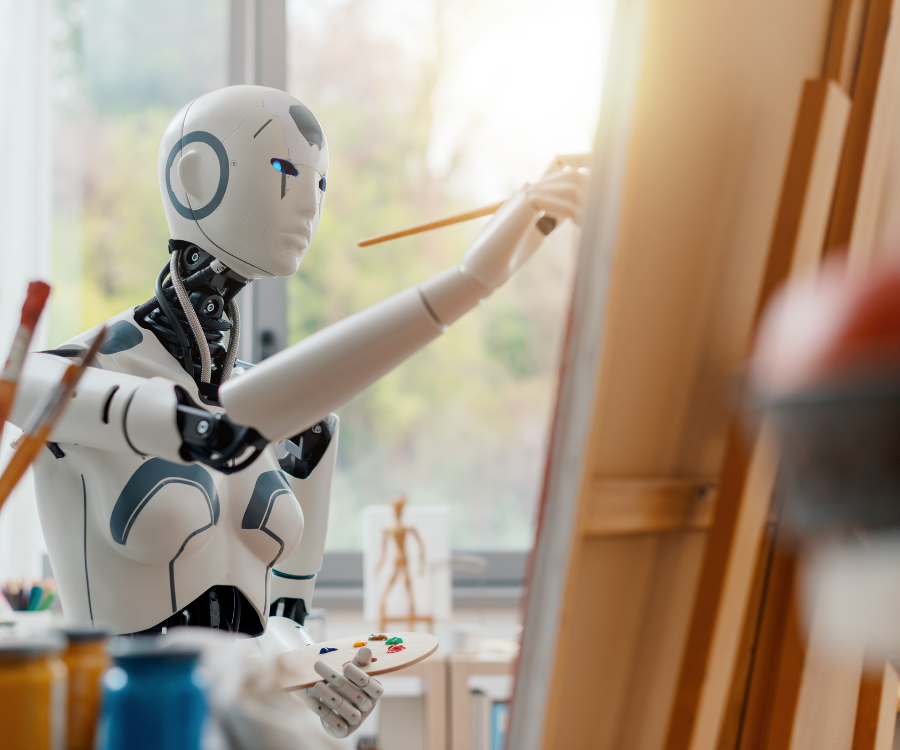When Machines Become Artists
Artificial intelligence (AI) is pushing the boundaries of creativity. Machines no longer just imitate; they now create original content. From visual arts to music, entertainment, and writing, AI is transforming the artistic landscape.
AI in Visual Art
One of the best-known examples is DeepArt, an algorithm that transforms photographs into artworks inspired by great masters like Van Gogh and Picasso. The system learns the artist’s style and applies it to new images. As a result, it blends the originality of photography with the unique techniques of legendary painters, creating stunning works.
AI in Music: Aiva
In music, Aiva is an AI system that composes original pieces. Inspired by classical composers like Mozart and Beethoven, Aiva creates soundtracks for films, video games, and concerts. This AI doesn’t just replicate classical music but explores new sounds, innovating traditional compositions.
AI in Writing: GPT-3
Writing is another field where AI is making an impact. GPT-3, a language model developed by OpenAI, can write articles, poems, and stories. These texts are so well-crafted that they can be indistinguishable from human-written content. This raises significant questions about creativity and authorship.
AI as a Tool for Artists
Many artists are embracing AI as a tool to expand their creative vision. Refik Anadol, for example, uses AI to generate visual art that reflects real-time data. His works are dynamic and interactive, challenging the boundaries between traditional and digital art.
AI in Painting: Mario Klingemann
Artist Mario Klingemann explores AI-generated painting and images. His works, created using machine learning algorithms, not only reflect contemporary art aesthetics but also question creativity and originality in generative art.
Ethics and Philosophy of AI in Art
The use of AI in creativity raises philosophical questions. If a machine can create art, can it truly be considered creative? Some critics argue that machine-generated art lacks the “emotional value” of human-made works. Others see AI as an opportunity to expand creative possibilities.
AI as a Creative Collaboration
Instead of replacing human artists, AI can be seen as a creative partner. Machines provide artists with new tools to explore possibilities beyond human capabilities.
Conclusion: AI Is Redefining Creativity
Artificial intelligence is transforming creativity in unexpected ways. AI is becoming an “artist” in its own right, generating original works across multiple fields. Despite ethical concerns, AI is set to become an integral part of creative industries. In the future, human-made and machine-generated art will likely coexist, enriching the global artistic landscape.


